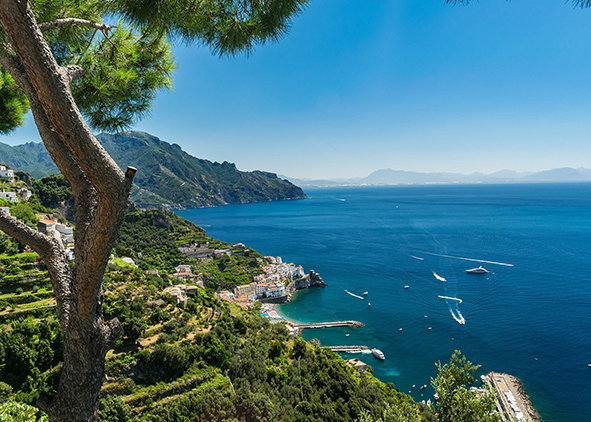Cultural landscapes. Artificial between resilience and natural selection
DOI:
https://doi.org/10.19229/2464-9309/642019Keywords:
human communities, adaptability, cultural landscapes, rural settlements, Cilento and Vallo di DianoAbstract
Over fourteen thousand and up to twelve thousand years ago, due to a serious food supply crisis, homo sapiens implemented a new model of survival based on agriculture, starting to sow, man became more sedentary. Nowadays, we rely on a new adaptation process to bring us closer to farm and craft activities, reviving small scale settlement systems. Knowing the peculiar features of a natural or urban artificial landscape and identifying in it with a feeling of belonging, as a place bearing culture and traditions, has always linked the human beings to their territory, to a geographical context. In the current global environmental crisis, the rural landscape is once again considered an asset for man, especially for its cultural and spiritual values, as a fundamental scenario to build individual and collective life. Therefore, for every human community, the whole landscape becomes a place where to reside, live, build, produce, sell, pass on, it participates in the whole cycle.
Downloads
Article Metrics Graph
References
Burdett, R. (ed.) (2006), Città. Architettura e società – X Mostra Internazionale di Architettura La Biennale di Venezia, vol. 1-2, Marsilio, Venezia.
Consiglio d’Europa (2010), Convenzione Europea sul Paesaggio. [Online] Available at: www.convenzioneeuropeapaesaggio.beniculturali.it/index.php?id=2&lang= [Accessed 4 December 2019].
Crocamo, C. (2012), Le tipologie dell’architettura rurale nel Parco Nazionale del Cilento, Vallo di Diano e Alburni. Uomo e Paesaggio: il metodo e la ricerca, Arti grafiche Cecom s.r.l., Salerno.
Ding, S.-L. et alii (2016), “Comprehensive Cellular-Resolution Atlas of theAdult Human Brain”, in The Journal of Comparative Neurology | Research in Systems Neuroscience, vol. 524, pp. 3127-3481. [Online] Available at: doi.org/10.1002/cne.24080[Accessed 4 December 2019].
Fumo, M. (ed.) (2012), Paesaggi culturali urbani – Valorizzazione ambientale del borgo storico di Vico Equense, D’Arco edizioni, Napoli.
Fumo, M., Ausiello, G. and Castelluccio R. (eds) (2016), Dal sapere alle buone pratiche – Strumenti e azioni per il recupero dell’architettura e del paesaggio rurale, Luciano Editore, Napoli.
Fumo, M. and Castelluccio, R. (eds) (2015), Criteri tecnico-scientifici per gli interventi sull’architettura ed il paesaggio rurale in Campania, Luciano Editore, Napoli.
Fumo, M. and Castelluccio, R. (eds) (2015), Manuale per il recupero dell’architettura rurale. Campania – Cilento e Area Vesuviana, volumi 1 e 2, Luciano Editore, Napoli.
Ghidoni, M. (2010), Verso la Biennale di Architettura 2010. [Online] Available at: www.abitare.it/it/architettura/2010/01/23/towards-the-architecture-biennale-2010/ [Accessed 5 December 2019].
Harari, Y. N. (2017), Sapiens. Da animali a dči. Breve storia dell’umanità, Bompiani, Firenze-Milano.
Heidegger, M. (1976), Saggi e discorsi, Mursia, Milano.
Martelli, C. (2018), Hashim Sarkis, il curatore della Biennale di Architettura che costruisce la democrazia con il Design. [Online] Available at: www.elledecor.com/it/people/a25628007/hashim-sarkis-curatore-biennale-architettura-2020-biografia/ [Accessed 8 December 2019].
Progetto Operativo di Assistenza Tecnica Mibac Rete per la governance delle politiche culturali (2012), Le tipologie dell’architettura rurale nel Parco Nazionale del Cilento, Vallo di Diano e Alburni, Arti grafiche Cecom s.r.l., Salerno.
Rota, A. (2005), “Architettura rivoluzione in Biennale Venezia 2006”, in La Repubblica, newspaper, 05 August 2005. [Online] Available at: www.architettiroma.it/archweb/notizie/07589.aspx [Accessed 6 December 2019].
Sereni, E. (1982), Storia del paesaggio agrario italiano, Editori Laterza, Bari.
UNESCO (2013), Dieta Mediterranea. [Online] Available at: www.unesco.it/it/PatrimonioImmateriale/Detail/384 [Accessed 6 December 2019].
UNESCO (2008), Cilento and Vallo di Diano National Park with the Archeological Sites of Paestum and Velia, and the Certosa di Padula. [Online] Available at: whc.unesco.org/en/list/842 [Accessed 4 December 2019].

Downloads
Published
How to Cite
Issue
Section
License
This Journal is published under Creative Commons Attribution Licence 4.0 (CC-BY).
License scheme | Legal code
This License allows anyone to:
Share: copy and redistribute the material in any medium or format.
Adapt: remix, transform, and build upon the material for any purpose, even commercially.
Under the following terms
Attribution: Users must give appropriate credit, provide a link to the license, and indicate if changes were made; users may do so in any reasonable manner, but not in any way that suggests the licensor endorses them or their use.
No additional restrictions: Users may not apply legal terms or technological measures that legally restrict others from doing anything the license permits.
Notices
Users do not have to comply with the license for elements of the material in the public domain or where your use is permitted by an applicable exception or limitation.
No warranties are given. The license may not give users all of the permissions necessary for their intended use. For example, other rights such as publicity, privacy, or moral rights may limit how you use the material.


















































































